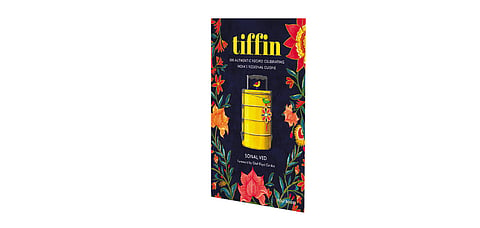
- Destinations
- Experiences
- Stay
- What's new
- Editor’s Picks
- Responsible Tourism
- CampaignsCampaigns
- Subscribe

You know that moment when your multicultural team at work sits down to lunch, and the one upstream swimmer opens an old-fashioned dabba, swamping the pizza planners and salad watchers in memories of home or holiday Few of our senses are so evocative of memories as smell and taste. Which is why, for the tourist currently tied down by the feet, this book goes one better than even the most generous colleague, like teaching the hungry soul to fish across 500 dishes, and not just feeding them a single feast
There are recipes that celeb chefs ignore and which are handed down only from home to wanderers from home&mdashlike the celebrated buknu powder of Uttar Pradesh that infuses the spirit of place in any hearth&rsquos roti. There are recipes that recall special occasions you were blessed with&mdashlike the lagan nu achar, a pickle you only met at a friend&rsquos wedding, and the khapse biscuit of Losar. There is the dish so rare it is almost exotic and teaches you more than you thought there was to know about a place you believed well travelled, like the bharwa guchhi, a stuffed morel in yogurt gravy. There are the dishes so typical yet so truly rooted in locale that you did not know to look for a bafauri or a filfora in your last sojourn in the &lsquoheart of India&rsquo. And then there are the evocative flavours that have you tracking down plantain stems and mustard greens in arid Western wastelands for a taste of vazhathandu kootu or gahori lai haak&mdasheven if you have never been close to their home.
Tiffin is as much a tastebud map as a cookbook, organised carefully with an extensive key defining ingredients, albeit with a rather non-inclusive bias for Hindi (and its speakers, as evinced by the &lsquobasic&rsquo recipes that include a very specific garam masala while pretending it is universal&mdashaggravating to regional cooks and misleading to foreigners). Within, the maps unfold by region&mdashWest, East, North, South, Central, and, for once acknowledging and celebrating the difference, Northeast India separately. Each region is zoned further into recipes for appetisers, poultry (and eggs), meat (and pork, making it a strange/ sensitive accessory), fish and seafood, &lsquovegetarian&rsquo (a regrettable demarcation of boundaries that creates a very distinct bias from &lsquovegetables&rsquo and relegates too many regional favourites to a no-cook&rsquos land), rice and breads, desserts and accompaniments (salads, preserves, sherbets). Each region has an overview that is too brief for truth or clarity the prefacing pictures for each section are far more evocative and could have served as introduction enough with careful captioning.
